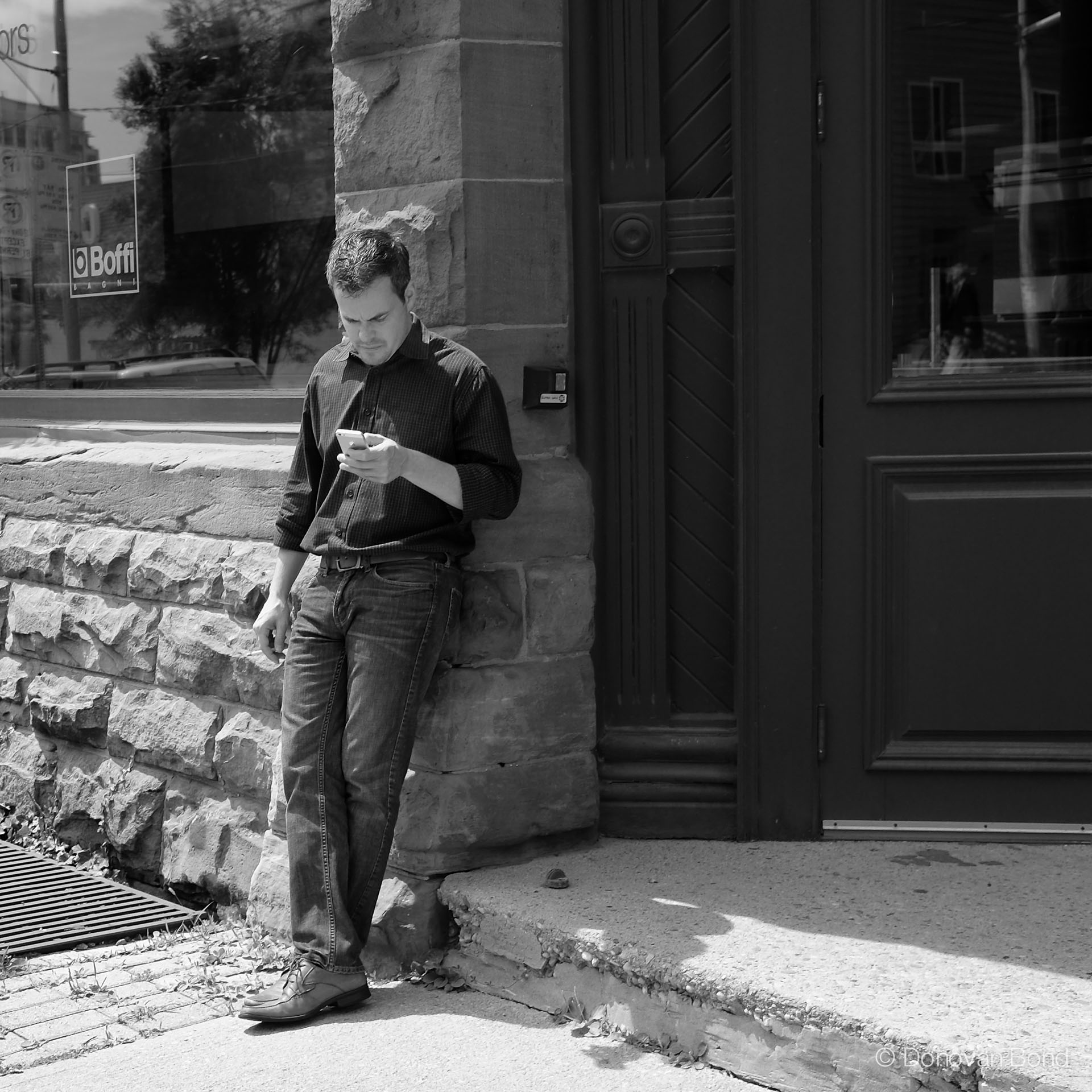The Billingham Hadley Small in Sage FibreNyte, Chocolate leather, and brass fittings.
For a head to head comparison of the Hadley Small and the ONA Bowery, head over to Fuji vs. Fuji, a site run by Yours truly.
Below is the story of how I arrived at buying the Billingham Hadley Small camera bag. Head straight to the review if you’d prefer.
The Story
I was in desperate need of proper camera bag for everyday use. Up until yesterday, I had been carrying my Fuji gear around in a “satchel” made by Fossil. It offered next to no protection, and it’s the reason I have a minor ding on the focus ring of my 35mm ƒ/1.4. I’d been looking for a while, but hadn’t found anything I was satisfied with.
When I first saw Billingham bags, I wasn’t 100% sure about the overall look of them. I liked the styling, but I wasn’t crazy about the standard khaki colour, and black just isn’t me. I’m much more of an earth tones sort of guy. I also found Billingham’s website pretty dreadful. It’s in serious need of a rework, and maybe they could add some, I don’t know, photos of their camera bags.
UPDATE: Fortunately, Billingham have completely overhauled their site recently.
Anyhow, I was also looking at ONA bags. They have great styling, but their bags are either a little too small (the Bowery), or a little too large (the Brixton). The Brixton was close, but it’s pricey at $269, and fairly heavy at 3.1 pounds. Then there’s the leather Brixton, at $419 and a full pound heavier. I made the mistake of getting a full leather bag before and I definitely won’t do it again. They look fantastic, but they’re much too heavy for something that’s slung over one shoulder. Your spine will feel it. Another thing I didn’t like about ONA’s bags is the clasp, and last, while Billingham’s site needs work, at least it doesn’t tell me I need to have Flash installed like ONA’s does. It’s 2014 people; time to serve up HTML 5 to anything other than iOS devices.
I was in Aden Camera not too long ago, and I noticed the “Sage” (green) Billingham Hadley Pro with “Tan” (light brown) leather behind the counter. Now we were talking. Green’s definitely my colour, but sadly, they didn’t have a Hadley Small for me to compare. I wanted to be sure I was buying the right size.
For the next little while I obsessed, as I do, reading reviews, watching videos on YouTube on the size differences between the Hadley Pro and the Hadley Small, and posting on forums about my desired configuration. After briefly considering the Pro, I was leaning heavily towards the Hadley Small; I wanted a smaller bag. Then I spotted it online somewhere, the Billingham Hadley in Sage with “Chocolate” (dark brown) leather. That was it. That was the bag. I had to have it.
There are a few Hadley Pros available on eBay in this colour at the time of writing, but the seller is ripping folks off with the price. I tweeted Aden; no luck. “It’s a new colour they (Billingham) just released,” they told me, and it would be months before they got more in stock. I decided to try Rob at rangefinderstore.com again. I tried to deal with Rob last year, but he was tough to get a hold of as he was often away on workshops. He’ll always offer to ship, but since he’s only about 35 minutes away from me, I wanted to deal in person so I could see what I was buying. As luck would have it, he had the Hadley Small, in Sage and Chocolate in stock, and would be in his studio the next day. Off I went.
Rob had a bunch of bags out for me when I arrived. He’s a super nice guy, and it was great to chat with him for a bit. I’d have loved to have stayed to nerd out longer, but my wife was waiting out in the car so I had to hurry. I hardly even looked at the green Pro he had. Not only was it too large, the tan leather simply would not do now that I’d seen the Chocolate. The only decision I had to make was whether or not to buy the shoulder pad add-on for an extra $40. Rob said folks love them, but he finds them frustrating. I typically find those shoulder pads annoying too. They never stay put, and don’t ever seem to be where you want them. Plus it would be added weight to an extremely light bag, and the weight of the contents wouldn’t necessitate a shoulder pad so I passed. I will say though, that it looks cool and for $40, I may just have to pick one up anyhow. I left Rob’s studio the proud new owner of a Hadley Small in Sage FibreNyte (Billingham’s synthetic canvas material that makes their bags so light), Chocolate leather, and brass fittings. Perfect.
The Review
There you have it. The story of how I ended up with my new everyday camera bag. It’s the right size, holds the right amount of gear, at 1.5 pounds it’s the right weight, and most importantly, it’s the right colour. Now I’ll write a little bit more about how the Hadley Small in use.
The Billingham seal of approval, and serial number. What other camera bag comes with a serial number? Billingham know their target.
Size
As mentioned, this is the perfect size bag for me. The Hadley Pro is too large to be an everyday bag. At that size and with the amount of gear it can hold, I’d want a backpack. I’ve carried around too much weight on one shoulder too often, and it can very quickly cause pain, even when I’m not carrying a bag. If I could take one thing from the Pro, however, it would be the top handle. It would definitely come in handy.
In this video review, the bag is shown with the camera packed front to back. This is important as it’s the only way you can have additional gear on either side of the camera. The ONA Bowery seems to be too small for this, but the Hadley Small works well.
Gear option 1: Fuji X-E2 with FUJINON XF 23mm ƒ/1.4 mounted above Fuji EF-X20 flash, FUJINON XF 14mm ƒ/2.8 and FUJINON XF 35mm ƒ/1.4 down the left, and Sony Playstation Vita and eyeglasses down the right.
Gear
I am astounded by how much gear this bag can hold. My current setup is the Fuji X-E2 with 23mm ƒ/1.4 mounted in the centre compartment on top of the little EF-X20 flash. The 14mm ƒ/2.8 and 35mm ƒ/1.4 in one side, and either my glasses and Vita, or my X100S in the other side. Then there are the two front pockets for batteries, mechanical shutter release, wallet, keys, etc. An iPad can slip in between the bag and the camera insert, but I will rarely if ever use it for that. It just stiffens up the bag, adds weight, and I’m not much of an out-of-home iPad user. Still, nice to know I can. It’s also possible to squeeze another small lens like the 27mm ƒ/2.8 pancake or even the 18mm ƒ/2 next to the flash and under the camera. This results in a bulge on the top of the bag from the camera. Three lenses is also possible on one side if you use a second divider, and the lenses aren’t too large.
I wish I was able to get my Sennheiser PX 200-IIi’s in one of the front pockets, but as you’ll soon learn in a forthcoming review, I’ll be using the PX-200s much less now so it’s not a huge deal. I typically wear my headphones around my neck when I need them anyhow.
Once the FUJINON XF 56mm ƒ/1.2 comes out, this will be a perfect, prime walkabout kit.
Weight
Just 1.5 pounds or 700 grams. I found the weight on B&H as Billingham’s own website doesn’t have the weight of the Hadley Small listed, just the Hadley Pro, which is strange. The Pro is 2.1 pounds or 1,010 grams. Another reason for wanting the Small.
Colour
Maybe the most important part. Billingham have a well rounded selection of colours to choose from now. My favourite just happens to be the new release. I’d have been really frustrated if I bought green with tan leather before I found the chocolate.
Gear option 2: Same as option 1, but replaces the glasses and Vita with an X100S. In this case, I even have a Really Right Stuff L-plate mounted on the X100S. It would also slide further down, I left it up for the photo.
Style
Remarkably, my wife didn’t particularly care for the look (this is remarkable because she typically likes anything that looks as though it could be from England and days gone by). She also said it looks like a fishing bag, which is pretty funny (Billinghams, of course, once were fishing bags). I think the colour combination I chose makes the bag a little more to her liking. I personally love it.
Water proof
Last, I love that I can wander about in the snow at our next FujiTuesday, and not worry about my gear getting wet.
The Conclusion
To sum up, after a couple days of use, I love the Billingham Hadley. I’m happy with my decision to go with the Small and I’m really happy I managed to get my hands on the colour I wanted. If you’re after a small bag for a mirrorless or rangefinder camera setup, I highly recommend the Billingham Hadley Small.



























